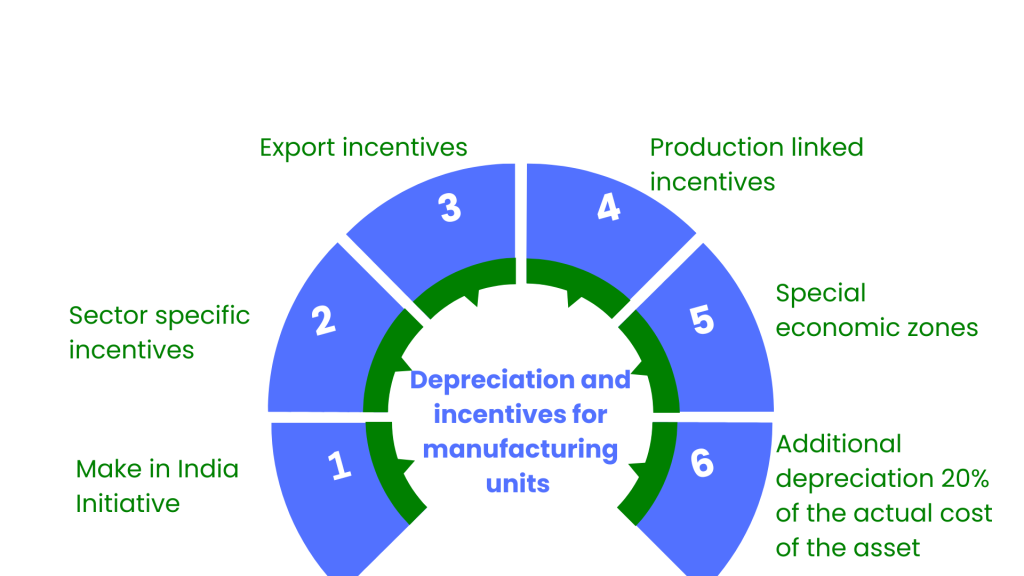Tax Incentives: Additional Depreciation and Incentives
The Indian economy depends much on manufacturing. The government has set several incentives to help this sector. Extra depreciation is a tax deduction that grants companies an added loss percentage in addition to normal depreciation on selected assets. This allowance aims at stimulating investments in new plants and machinery to boost productivity and competitiveness in manufacturing. This article will cover the various tax incentives for businesses in India along with available additional depreciation.
Eligibility Criteria for Additional Depreciation
To qualify for additional depreciation, the following should hold:
Asset Type: The asset would have to be a new plant or machinery and not include ships or aircraft.
Business Type: The business would need to be involved in producing or manufacturing any article or thing.
Installation Requirement: The plant or machinery would need to be purchased and installed after March 31, 2005.
Rate of Additional Depreciation
The normal rate of additional depreciation is 20% of the actual cost of the asset. But for assets purchased in specified backward areas, the rate is higher at 35%.
Example of Calculation of Additional Depreciation
Suppose a manufacturing company purchases a new machine for ₹1,000,000. The additional depreciation would be computed as follows:
Normal Additional Depreciation: ₹1,000,000 × 20% = ₹200,000
Backward Area Purchase: ₹1,000,000 × 35% = ₹350,000

Steps to Claim Additional Depreciation
Claiming additional depreciation under the Income Tax Act requires several steps that businesses need to adhere to to be compliant and achieve the best tax benefits. Here’s a step-by-step guide:
1. Determine Eligibility
The asset should be new plants or machinery, but not ships or aircraft.
The business should be involved in the production or manufacture of any article or thing.
The plant or machinery should be purchased and installed after March 31, 2005.
2. Record Keeping
Purchase Invoices: Keep a record of the purchase to demonstrate the cost of acquisition.
Installation Certificates: Get certificates to ensure that the asset is in working condition.
Proof of Payment: Keep payment receipts or bank statements as proof of payment.
Usage Records: Keep records of the usage of the asset to ensure it is utilized for business purposes.
4. Take into Account the Usage Period
If the asset is utilized for less than 180 days during the year of acquisition, a maximum of half of the additional depreciation can be claimed in that year. The rest can be claimed in the following year.
5. Claim in Tax Returns
Include in Tax Returns: Ensure that the additional depreciation calculated is incorporated into your tax returns to claim the deduction.
Compliance with Tax Laws: Verify that all documentation and calculations comply with tax laws to avoid any disputes or penalties.
6. Consult a Tax Advisor
Professional Advice: Consult a tax expert to make sure the calculation is done correctly and by ever-changing tax laws.
Claiming extra depreciation involves proper planning and compliance with certain conditions. By following these steps, companies can maximize their tax savings while keeping themselves in conformity with the Income Tax Act.
Other Incentives for Manufacturing Units
Apart from further depreciation, the Indian government provides several other incentives to attract manufacturing:
Make in India Initiative
Initiated in 2014, the Make in India program aims to make India a world manufacturing center. The initiative provides several incentives, which include:
Sector-specific Incentives: Up to 25% subsidy for electronics manufacturing.
Further Depreciation Allowance: A further 15% depreciation allowance to companies investing more than ₹1 billion in plant and machinery.
Export Incentives: Duty drawbacks and tax remission schemes for exports.
State-level Incentives: Exemptions from registration fees, stamp duties, and property taxes.
Production Linked Incentive
India has launched PLI schemes for 14 priority sectors with an outlay of ₹1.97 trillion. The aim is to enhance domestic manufacturing and exports.
Special Economic Zones
The schemes provide tax benefits and infrastructure services. Firms in SEZs are exempt from import taxes, VAT, excise tax, and services tax.
Get Started with TaxDunia
The government incentives and additional depreciation are critical in facilitating the development of the Indian industry. By understanding and utilizing such incentives, manufacturing facilities can save taxes. They will become more competitive and help drive economic growth in the country. As India continues to develop as a manufacturing hub, these incentives will remain crucial for attracting investment and enhancing innovation. Reach out to TaxDunia to get reliable business solutions and services regarding finance and taxation. Our team of dedicated professionals provides real-time updates with a customized approach.

